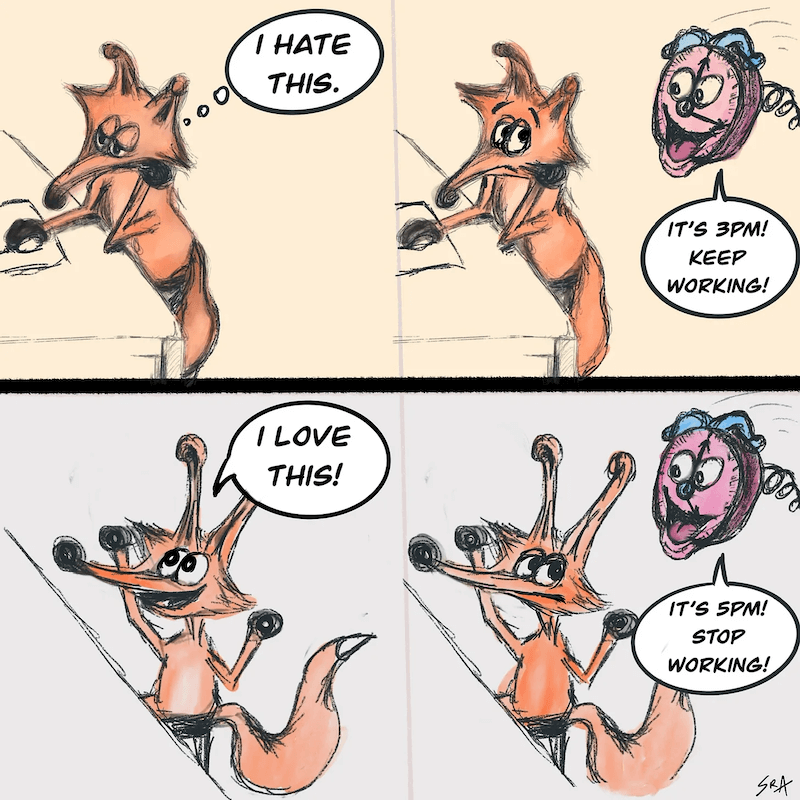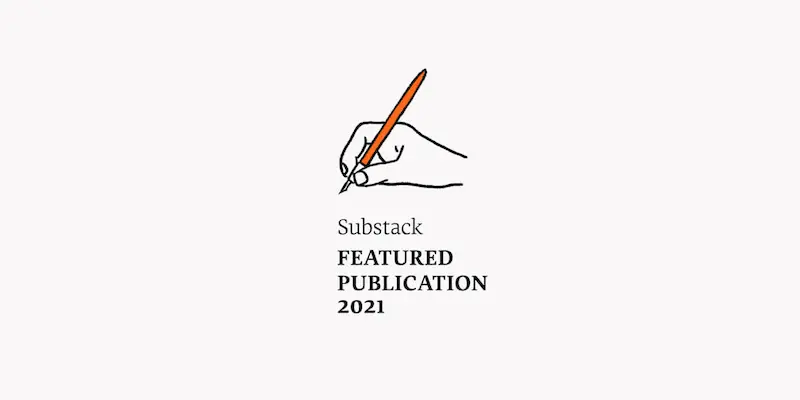Manage Your Energy, Not Your Time
“Work-life balance” boils down to a simple idea: Don’t work for too many hours, and make sure you rest for enough hours. While this approach can reduce the likelihood of overwork, it doesn’t cater to our individual experience of work. It assumes that we all experience an hour of work exactly the same way, for every activity we do.
Sometimes we feel exhausted after just ten minutes of a task. Other times, we’re immersed for hours before we even check the time. Given this drastic variance in our “experience” of time, does it really make sense to schedule our lives purely based on hours and minutes?
Time can be a terrible manager. Instead of planning our lives by the hour, we must learn to notice and manage our energy.

Balancing our lives using time alone will always fall short, because time is only one part of the equation. Different activities energize each of us in different ways. What I find energizing might be draining for you. (I’m referring to the mental and emotional energy that fuels motivation, not the physical energy our body gets from nutrients.)
Our personal “activity-to-energy” ratio has a much greater impact on us than how many minutes we spend on a given activity. And yet, most of us are trained to pay attention only to the minutes, never to our energy. Building an energy mindset can help us navigate our lives with greater internal alignment. We can unlock the mysteries of how different parts of our day affect us, and adjust our activities to better align with our energy.
In this essay, I’ll share some of the tactics I’ve found most helpful in managing my own energy. First, we’ll look at how we can use practices like mindfulness and journaling to notice our energy patterns. Then, we’ll explore how we can re-align our own expectations based on those patterns, and avoid self-sabotaging. Finally, we’ll consider how we might follow our own energy, and use it as a compass to inform how we structure our life.
Drain or Gain?
Our body is constantly sending us signals about how the activities we engage in affect us. Once we start listening to them, we can learn a lot about ourselves.
The first task is noticing. Signals are strongest in the moment of the activity itself, or just after it. Through mindfulness and self-awareness, we can step out of the moment and take a look at it. Did that conversation energize you, or drain you? How about that chunk of work? We can use each activity as a self-learning opportunity.
If you’ve never stopped to notice how you’re feeling in the moment, a good training ground for this muscle is meditation. (If you’re new to it, check out my playlist on getting started with meditation. In particular, you might find value in the video on building self-awareness through reflection. )
Once you begin to notice these signals throughout the day, it can be useful to start (lightly) tracking them. By doing so, you begin to notice the patterns within your own energy levels. The most effective practice I’ve found for this is journaling. I recently published a video on my journaling practice, including my favorite prompts. One of the prompts asks this pair of questions:
What fueled your energy? What drained your energy?
Bit by bit, you’ll learn your personal patterns.
You might also find, as I have, that your energy patterns change over time. When I’ve been in a mode of isolation (working heads down) for several months, a video call with a friend can be refreshing, encouraging and energizing. But if I’m buried in calls every week, yet-another-call can drain the last bits of energy I have left, leaving no room for deep work.
Adjust with Awareness
Once we gain a basic understanding of our own energy patterns, there is an immediate temptation to act. We want to use this newfound knowledge to reshuffle our whole lives.
I suggest you resist that temptation. Take it slow. Working on yourself can become an all-consuming project, one which has no end. Growth is a marathon, and you do not need to change everything overnight. Give yourself credit for noticing and becoming more aware of yourself. Self-awareness is a major step forward in and of itself.
The simplest first step is to stop self-sabotaging.
Here’s a scenario that’s probably familiar: You make a plan for the day. You don’t meet it. You feel bad. You beat yourself up. You criticize and judge yourself. You pile onto the initial dissatisfaction by adding disappointment into the mix. You rub salt onto your own wounds.
But if we re-evaluate our “disappointing” days with our energy patterns in mind, we can discover the root of the problem and reset our expectations of ourselves.
Instead of beating yourself up, recognize the reason behind your struggle. With your energy patterns in mind, it becomes much easier to forgive yourself, and work around those patterns. Self-awareness is the first step towards self-compassion.
You can go further, and make adjustments based on the patterns.
For example: I used to schedule calls in the morning. Afterwards, I would struggle to write, and then feel bad about myself. I thought it was because I didn’t have enough self-discipline. But once I started paying attention to my energy, I realized that a single video call can drain my energy and make deep work incredibly difficult. Even a fun, “energizing” call takes a significant amount of energy (mostly because I have to sit in front of a video camera for an extended period of time.)
So, I reversed the order: Writing first. Calls second.
Since then, I’ve been able to get into deep work in the morning, and still feel energized for calls afterwards. Writing actually gives me an energy boost, so I now show up more energized for calls than when I took them first thing in the morning.
When informed by our own energy patterns, even small changes can have a massive positive impact.
Follow Your Energy
In the first stages of energy-driven change, we can experiment by changing things that are in our control, such as our personal schedule.
But what happens when our external work schedules conflict with our energy patterns? Often, our work schedule is simply out of our control. In those situations, instead of trying to fight it, our best bet may be to begin with building awareness of the severity of misalignment. We can build an energy profile for ourselves, and include it as a factor in our life decision-making.
Our energy patterns can guide our future by serving as a factor in our decisions for our next project, job, or career direction.
If you find activities that you are uniquely energized by (which the majority of people find draining), you may have hit upon a personal superpower. By doubling down on those, you can build personal leverage, while maximizing enjoyment of your work at the same time.
Our energy patterns can serve as a compass to help us navigate our lives. We can learn to limit self-sabotage, and seek environments and activities in which we naturally prosper.
Think of energy patterns as a sense, not an exact science. If energy level was a temperature, sensing patterns is like putting up a finger to gauge the wind. We mustn’t over-index on any given signal, but long-term patterns are worth respecting. All in all, these signals should serve as another input into the broader equation of how we understand ourselves.
Lastly, remember that no matter what you do, modern life is always going to include things that drain your energy.
The goal is not to get rid of all your energy drains overnight, but to slowly shift your life toward energy gains.
With an energy mindset, we can learn to manage ourselves, not just our time.

